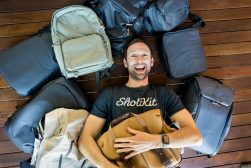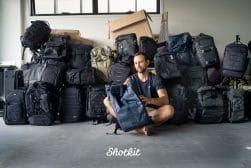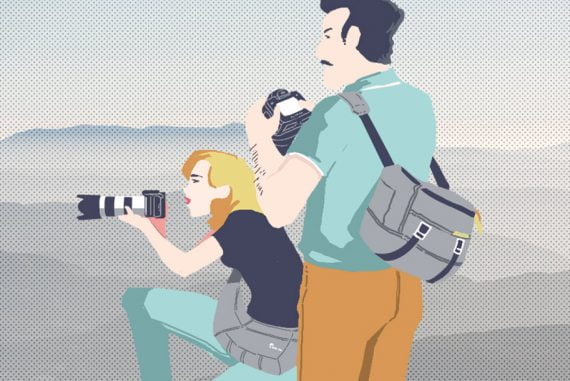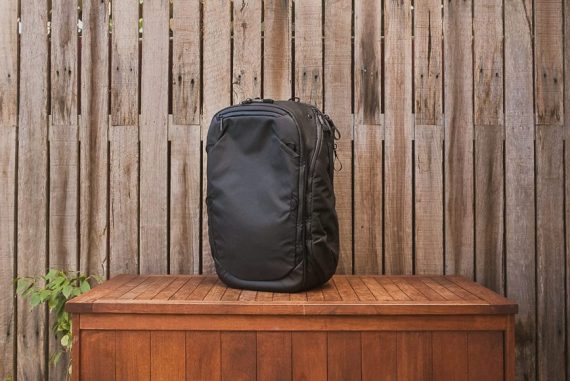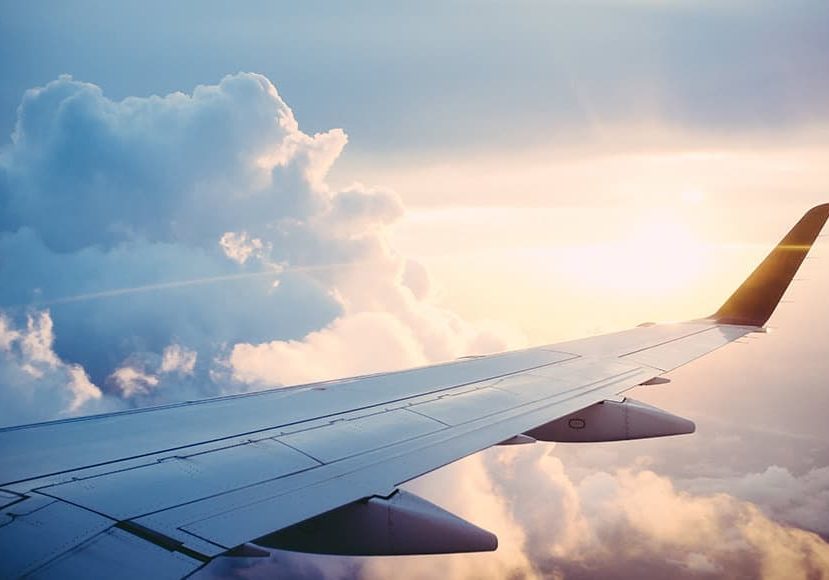
Travel Tips for Photographers
If you're a traveling photographer or just a frequent flyer, don't miss this list of the best travel tips including essential gear for your plane journey.
Learn | Photography Guides | By Mark Condon
Since becoming a destination wedding photographer, I’ve been interested in accumulating as many travel tips for photographers as possible. Travel tips include everything from general advice right down to specific products I use to make my travels more enjoyable.
Traveling for photography work is exciting, but it also introduces a lot of uncertainty. Whilst you may be an experienced photographer in your home country and even an experienced traveler, shooting professionally overseas is a different ball game.
In this blog post, I want to provide some travel tips from photographers who have a lot of experience of working overseas, as well as introduce some travel tips of my own.
If you have any good travel tips of your own, let us know in the comments so we can all benefit.
Travel Tips for Photographers
Health & Safety Travel Tips
- Pickpockets and losing personal belongings are unfortunate eventualities you need to prepare for. Lay out all the contents of your wallet on a photocopier and copy either sides of all cards. Put this piece of paper somewhere safe. As a second backup, scan it and email it to yourself.
- Small, lightweight Bosvision retractable cable locks
are incredibly handy, not to mention inexpensive. You should always carry one to be able to quickly secure the zippers on your bags, then secure your bag to an immovable object for short times.
- Prepare a ziplock bag
with medications to cover general ailments. Imodium
is essential. Get the biggest ziplock bags so you can use them to cover flashes and other gear when caught in the rain.
- Always drink bottled water and eat food that is piping hot. Pack a greens powder to cover all your nutritional bases in case of poor food selection. I recommend Amazing Grass Green Superfood
. Spoon enough for a daily dose on your trip into a ziplock bag
, include a plastic travel spork
(which can also be useful to eat with) and carry in a small, cheap protein shaker.
- If you’re really worried about your camera being stolen whilst it’s on a strap on your body, attach a tripod plate to the base, then thread the same Bosvision retractable cable lock
through it and your belt, belt loop, or just anything that would prevent a pickpocket from slashing your strap and grabbing your camera.
- One other way to prevent attention to your camera gear is to try and make it look less valuable. You can try wrapping parts of your camera body/lens clumsily with masking tape, or covering logos where possible. Masking tape is perfect since it leaves no residue when removed. See below for another great use for masking tape.
- If you simply have to check in your camera gear, consider investing in a Tile Bluetooth Tracker to help track down your luggage should it go missing.
Packing Tips for Travelers
- Everyone agrees that the best way to pack your clothing is by rolling it – here’s a tutorial. It’s also worth investing in some packing cubes like these.
- Lightweight Balanzza Mini USB luggage scales
are best in class and perfect for checking you’re maximising your carry on quota.
- In an ideal world, you’d only have carry on luggage. If this isn’t possible, be sure to pack at least your essential gear in carry on, then you can check in other items. If your checked luggage goes missing (it does happen!), you still need to be able to complete your client’s work, so plan accordingly. I use the excellent Think Tank Airport Takeoff
for my carry on camera gear and a separate backpack.
- If you really must take a tripod with you to achieve a perfectly stable shot, I’d highly recommend nothing any bigger than a ‘tabletop tripod’ like the ones on this list of the best travel tripods. The aim of the game is to have the lightest luggage possible, and even a lightweight regular size tripod will be overkill.
- Tim Ferris
‘s trick to avoid lost luggage is to pack a starter pistol in your checked luggage. At the check in desk, declare your case as containing a fire arm and it’ll be marked for extra careful treatment – there’s no way your airline is losing a bag containing a firearm.
- Pressure and temperature in the checked luggage compartment can affect camera gear, so keep this in mind when packing. Cases such as this Pelican 1510 SC can handle extreme pressure/temperatures well and fit in the overhead compartments.
- Invest in crease-resistant clothes. I recommend several brands in this post on clothing for photographers which are crease-resistant and quick drying, meaning you can hand wash them and have them dry by the morning.
- Pack one smart set of clothes in your carry on in case your checked luggage goes missing. Smart tip by Barbara Rahal.
- Find a pair of shoes that look smart but feel like sneakers. The Cole Haan Lunars
are my faves.
- Pack some Shout stain removal wipes
incase of inevitable food/drink spillages whilst travelling.
- Pack a lightweight waterproof jacket such as North Face Venture jackets
which are packable and affordable.
- Pack a small flashlight. You’ll be surprised how dark it can get outside in some areas away from the city lights. A good quality one like the LED Lenser P7.2
can also double as some fill light on your subject in a pinch, and you can tape some CTO gel to the front to balance it.
- Pack some duct tape
. Even if you have no idea what you’ll need it for, one day you’ll need it, and you’ll be thankful you have it.
- Another one to pack is masking tape. Stick a length to all your bags and anything you don’t want to lose, and write your phone number on it using a Sharpie permanent marker, another useful item for your camera bag. If nothing else, it’ll help you distinguish your check in luggage.
- Have all your batteries fully charged in case the electricity isn’t working in your destination country. Also, more than 4 batteries are not allowed in your carry on, so remember to pack the rest in your checked in luggage. Nice tips from Barbara. I recommend the precharged Eneloop batteries for your flashes.
- According to Barbara who has travelled extensively for her photography work, some countries only allow one camera per traveler (Mexico used to be like this). In these instances, you can always try and ask your client to carry one camera body!
- Get yourself a good travel wallet for easy access to all your essentials.
- If your bag is anything like mine, you’ll have a spaghetti bolognese of cables and wires inside! The Skooba Cable Stable
is great for keeping them all in check, and essential if you’re bringing things like camera chargers and other cable accessories.
- Body wipes are great to refresh yourself on the plane before landing. The Sea to Summit Wilderness Wipes
are the best you can get.
- Get a great toiletries bag like the Eagle Creek Pack-It Wallaby
with a hook so you can hang it in the airplane toilets – the sink area gets wet and messy quickly. Wirecutter tested 6 models and the Eagle Creek came out number one.
- 1 travel plug (LOOP one is rated number 1 on Amazon) and one power strip is all you need – nice tip from Paul Woo. The Accell Home and Away power strip
has a built in surge protector, USB plugs and the ability to plug items on different sides of the unit, so it can handle odd shaped plugs like those used to charge Macbooks.
- Manfrotto Nano clamps
are great to fix flashes to places where you’d normally need a light stand. I tend to prefer ball bungees which are cheaper and lighter.
- Traveling via Singapore? Pack your swimmers so you can take advantage of the rooftop pool and arrive fresh at your final destination. I love the Outlier shorts I reviewed here that double as fast drying swimmers.
- For the ladies – find out if the city you are traveling to sells tampons. Some don’t, like Athens.
- If you’re planning some underwater photography and don’t want to splurge on pro camera housing, consider a DICApac
. I’ve used them in the past and they’re fine for very shallow photography in clear waters. Just be sure to test it before you leave on a t-shirt to easily spot for leaks.
- The Eagle Creek Packit Packing Cubes are very popular. Not only do they keep your clothes organised well, they also allow you to fit more into your bags. If you travel frequently, you may want to consider keeping items pre-packed in the units, ready to throw into your bag at a moment’s notice.
- If you spend a lot of time in hotels, invest in a pocket sized projector to project movies from your phone or laptop to the wall. It can also make culling easier than using your small laptop screen. Jeff Newsom’s favourite pocket projector is the Asus S1, which he also uses for creative portraits.
- A portable backup battery pack for your phone/USB devices is essential. The most popular one is the excellent Mophie Powerstation XL which holds up to 8 complete charges and lets you charge two devices at once. If you’re planning to charge higher power devices like iPads, you’re better off with the 12,000mAh version.
- Compact travel cameras are a much better idea than lugging around your pro gear whilst abroad. One of my favourite travel cameras is the Olympus OMD-EM5 Mark II, but other popular ones include the Fuji X100T, the Canon G11, the Sony a6300 and the Ricoh GR. On shorter trips, I’m also a fan of using my pro body (currently the Nikon D750) and a high quality but lightweight prim lens, a current favourite being the Nikon 35mm f/1.8G (review here). If I were a Canon shooter I’d get the Canon 40mm f/2.8 and Canon 24mm f/2.8 pancake lenses. If I had a Fuji interchangeable lens cameras I’d get the Fuji 23mm f/1.4. You should also check out our guide to the best travel cameras for blogging.
- I don’t usually use a camera strap when I’m just shooting with one body, but when I need one for traveling I like the Blackrapid RS7.
- This tip should come long before you travel, but when you need to get a new passport or renew an old one, use a passport photo app to take your own picture.
Travel Tips for At the Airport
- If there’s a weight limit, buy something at duty-free and ask nicely for the shop clerk to wrap some items for you!
- If you really need to take those heavy lenses, consider wearing a Peak Design Capture Lens Kit
which will allow you to dangle lenses off your waist.
- Pack the lightweight strap that came with your camera (or just a strong piece of cord), even if you don’t use one for shooting. This will mean that you can hang your camera around your neck at check in, since this won’t count towards your hand luggage weight limits. Then you can just replace the camera back in your bag before boarding.
- If you really want to push the limits, invest in one of the LowePro S&F Technical vests that allow you to carry everything but the kitchen sink on your body.
- Pick up a bunch of departure cards from your home country’s airport so next time you fly you can have 99% of it filled in already, saving you some precious time.
- If you’re a frequent flyer on the same airline, always ask for an upgrade, or at the very least, an exit row for the extra legroom. If you don’t ask, you don’t get!
- If you have a large carry on item such as the Think Tank Airport Takeoff
(my roller bag of choice), make sure you get on the plane as early as possible since overhead compartments quickly fill up. You don’t want to have to rely on the stewardess to stow your precious camera gear somewhere you can’t see it.
- Have business cards in your top pocket and your photography portfolio on your iPad. Your plane seat neighbours just became your captive audience! Spark up a conversation and let them know why you’re being paid to fly somewhere.
- If you’re travelling with 2 cameras in your hand luggage, try and split them up into two trays when going through the x-ray machines at customs. Even better, try and get someone else’s tray in between yours. The x-ray attendant won’t know that both cameras belong to the same person, thus reducing the risk of you being pulled up for being a professional photographer. Great tip by Ed Peers.
Travel Tips for On the Plane
- Small, cheap items that make your journey infinitely more pleasant include decent ear plugs (Hearos ear plugs
are cheap and popular); comfortable eye mask (the comfortable Bedtime Bliss Eye mask
doesn’t put pressure on your eyes); flip flops to ease swollen feet (get the lightweight Crocband FlipFlops); a neck pillow (many a seasoned traveler recommends the AirComfy travel pillow
); lightweight sweater (invest in Minus 33 merino wool sweater
for the ultimate quality and zero odour); eye drops (I swear by Rohto Z Japanese eyedrops which are the most refreshing by far) and face mist (my gf swears by the Eau Thermale Avene Thermal Spring Water).
- Noise-cancelling ear phones are a must for long-haul flights so you don’t end up strangling the baby in the seat next to you. My preference are the Bose QC20i which get great ratings on Amazon too
.
- Airplane food tastes like crap and has little nutritional value. If you’re on a long-haul flight, that’s a long time to be putting your guts under unnecessary stress. Minimise damage by drinking lots of water (the collapsible Platypus Plus water bottle
is perfect for hand luggage), snacking on nuts (I buy a big bag of mixed nuts for every flight) and even consider a greens powder such the Amazing Grass Green Superfood. See above for how I prepare it for easy travel.
- If you’ve ever struggled to use your laptop on the plane due to the seat in front being in the reclined position, or simply because using a laptop on the tray table for long periods puts a huge strain on your neck, here’s my solution. It involves using an iPad as a second screen (GoodDual Display is a good app for this that’s reasonably priced) and some hook and loop sticky tape to stick the ipad to the seat in front.

- Remember to move – DVT is fatal and relatively common even for young, fit people. If you’re not in the aisle seat, stretch, wiggle your toes and contract your leg muscles as often as possible. If you’re really concerned, invest in a pair of these popular Travelsox Graduated Compression socks.
- The WD My Passport Wireless external hard drive
is a godsend for small airplane tray tables. Robert J Hill leaves his in his carry luggage in the overhead compartment and can access files while seated, using his lightweight Macbook Air 11″
. He carries two other drives in separate bags for multiple backups – the WD My Passport Air
and WD My Passport Pro
.
- Most plane seats have USB chargers in the seats now. Make sure you hit the ground with a full charge in your phone by packing one of the Duragadget USB chargers with a tidy retractable lead
.
- Use the command line trick to prevent your Macbook from sleeping when the lid is closed. This can be useful if you want to continue downloading an SD card whilst the Macbook is stowed in your bag.
- A fresh pair of socks can do wonders after a long flight – Icebreaker socks
are my favourites which are warm when you need them to be but not too thick, last a lifetime and never smell.
Booking/Planning Tips
- Plan to arrive at least 2 days before your work date to familiarise yourself with the area and minimise jet lag.
- If traveling with a second shooter, consider flying on different days with different airlines – a good ‘just in case’ tip from cautious traveler Paul Woo!
- Hopper is a great free app which allows you to monitor the best times to fly based on ticket prices.
- Flightboard is a well designed app that lets you look at the live departure and arrival boards of any airport in the world.
- Resist the urge to book the cheapest flights every time and favour airline consistency. Sticking with one airline can lead to perks such as upgrades and use of lounges – invaluable for fast, free wifi, decent food and occasionally showers to make layovers much more pleasant.
- Some airlines offers TSA-pre approval for frequent flyers which can significantly speed up time through security.
- If you’re traveling with someone else, book the aisle and window seats (rather than two adjacent seats). It’s unusual for someone to book the middle seats, so if the flight isn’t full, you’ll have the whole row to yourselves. If it’s full and someone books it, simply ask to swap.
- I kind of like the break from the Internet whilst in the air, but if you need it, buy in-flight wifi while booking as the price jumps dramatically when you’re in the air.
- Download the Photographer’s Ephemeris and Rain Parrot too. The first app helps you plan for the best time of day to shoot, and the second app warns you when rain is about to hit.
- AirBnB has been great for when I travel for my photography work. Obviously it depends on where you stay, but in general, the standard seems to be very well maintained if you read the reviews and communicate with your host before booking. Use this AirBnb link to get a discount when booking.
- Uber works in most developed cities. Definitely not something you want to rely on to get you from A to B on a schedule, but a great way to save some money if time isn’t an issue.
Navigation/Communication Tips
- Whilst in your home town your phone and Google Maps might be good enough, it’s much riskier to be relying on this for navigation when abroad. Aside from dodgy phone coverage in certain countries, you may run into excess data charges whilst roaming. I always pack a separate car GPS unit, and I highly recommend the Garmin Nuvi 2539 LMT
, which scores top marks. A cheaper alternative is the Garmin Nuvi 58LMT
which is also excellent. Be sure to download the map of the country you’re visiting ahead of time.
- Unless you’ve got cheap international roaming on your mobile phone, it’s wise to buy a travel SIM card, assuming you’ve also got an unlocked phone. The OneSimCardPlus is a popular option which has prepaid credit and works in over 200 countries. It’s much more professional if you’re able to give your clients a local mobile number for them to contact you at any time, without any exorbitant connection fees.
- If you’re really worried about losing your way (I am!), print the driving directions and a map from Google Maps before you go. Ideally you’d have a hard copy map too.
- Tripit is an awesome app for keeping all your travel info in one place. Aside from it being another backup of all my flight info, I also use it to keep track of my accomodation addresses. It also works seamlessly with AirBnb.
General Travel Tips
- Check all your camera gear, actually shooting some frames upon arrival. Strange things can happen to your gear whilst up in the air.
- Check to see if you can photograph in the country without work visas. Shooting a wedding in Bali for example requires something specific.
- Network with other photographers. Lina Hayes got in contact with a few photographers who had also shot in the same area that I was going to be shooting in. They provided useful advice about the local areas and gave some ideas and inspiration on where to shoot. This is especially useful if you have limited time to location scout beforehand or if you just need some back-up spots.
- Check your business/equipment insurance. Will they cover theft, damage etc. overseas? Another good tip from Lina.
- Backpackers often carry garbage bags whilst traveling to cover their bags in the event of a downpour. You should do the same for your camera gear, or just to use as somewhere dry for your photography subject to sit.
- Phone your bank before you travel to alert them of which cities you’ll be using your cards.
- Resist the temptation to source the cheapest flights and accommodation possible. Invest in yourself to ensure you perform at your very best – you owe it to your clients who are paying you to be there over someone local.
- Always carry a business card of your accommodation and photography work venue to be able to show taxi drivers.

Check out these 8 essential tools to help you succeed as a professional photographer.
Includes limited-time discounts.





